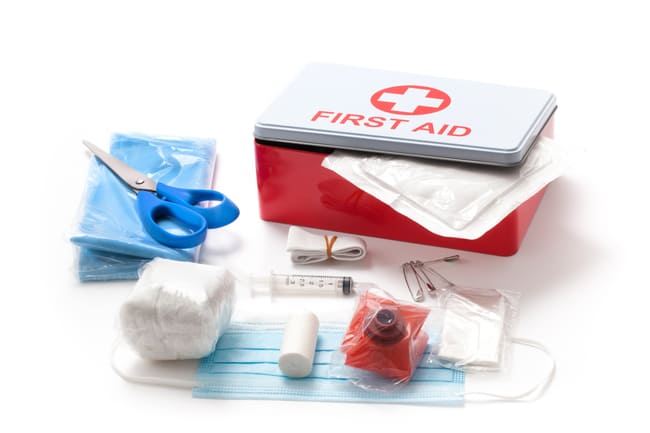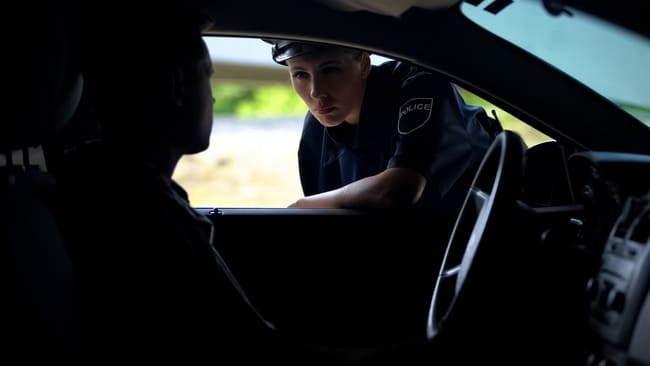
A first aid kit belongs in the car: learn it in driving school we do, but most drivers then forget about it again. At the latest during the main inspection, it will be noticed if the first aid kit is missing in the car. For years it has been a requirement to always carry a first-aid kit with you when you are traveling in a car, no matter how short the distance you travel: the first-aid kit must be carried with you.
Every day we expose ourselves to a potential hazard when using our cars on the road. Fortunately, really bad accidents with serious consequences rarely happen, but every driver should always be prepared for the worst of an emergency. The first-aid kit in the vehicle should not only be a rescue for the driver himself in an emergency, but also serve to provide first aid if you are a first aider at the scene of an accident. The most important items in the first-aid kit here are the warning triangle, a high-visibility vest and the first-aid kit. The Road Traffic Licensing Ordinance stipulates that these items should always be found in a first-aid kit.
Contents
What requirements have to be fulfilled?

Since 2014, a first aid kit that is carried in a car and is to be approved by the TÜV must be approved according to DIN 13157. If the contents of the first aid kit correspond at least to the DIN 13157 standard and the expiry date of the contents has not yet been reached, the driver is on the safe side. However, he must also ensure that the contents of the first aid kit are protected from lubricants, as well as dust and moisture. Although the first aid kit is made of durable plastic and can therefore offer ideal protection against external influences, the vehicle owner should check the condition of the contents from time to time. As far as the content itself is concerned, there are detailed lists that list what should not be missing in the first aid kit. Among other things, these are adhesive plaster rolls, plaster sets, bandages, bandages, wound compresses, fixing bandages, first-aid scissors, rescue blankets, as well as medical gloves and wet wipes, as well as a first-aid brochure, which gives more detailed information on what the Erste -Help measures must be observed and how exactly they are to be carried out. A table of contents also belongs in the first-aid kit, which explains exactly what should never be missing in the first-aid kit.
What is the expiry date on the first-aid kit for?
Most of you will have noticed: the first aid kit in the vehicle actually has an expiry date. But what is it good for and does it actually have to be considered? The fact is that not only food or organic substances have a shelf life. Plasters, as well as rubber gloves or sterile compresses also age over time, become porous and thus lose their effectiveness and durability. If you notice that your first aid kit in the vehicle has reached its expiry date or that the list of contents is no longer complete, you should not take this lightly. If you are unsure about refilling and would prefer to get help, you can always contact the German Red Cross or pharmacies. Here you get exactly the material you need to fill up the first aid kit. You can also refresh your first aid skills and ask unanswered questions. If you would like to buy a new first aid kit for your car because your current one is absolutely outdated or is no longer in good condition, you can also go to pharmacies or hardware stores and gas stations. Here you will find mostly complete sets, which correspond to the 13157 standard. Usually you don't have to pay more than 15 euros here. But the more content is offered and the better the quality of the material, the higher the price, of course. Also pay attention to the expiration date. Even if first aid kits last a relatively long time, you can accidentally buy a new one that has already expired.
Where is the best place to store the first-aid kit?

In general, there is no precise rule here. The driver can store the first aid kit exactly where he can access it particularly quickly. Many drivers store the first-aid kit under the passenger seat, so that it does not take up any space in the vehicle, is not directly visible, but is still within reach of the driver at any time in an emergency. However, you should refrain from keeping the first aid kit in the trunk. Imagine you have an accident right at the back of the vehicle and access to the trunk is blocked. This means that you will no longer be able to access the first aid kit.
What happens if I don't have a first-aid kit in the vehicle?

First and foremost, this is a problem for you personally if an accident actually happens and you or a passenger urgently need first aid. At the latest then it will be your undoing if you have not carried a first-aid kit with you. But even with a general traffic check, the police can demand a fine for missing a first-aid kit, but this is generally limited to a few euros. However, you will run into problems again at the latest during the general inspection, because it is now mandatory to carry a first-aid kit on the road.
A first aid kit is missing in the car when traveling on vacation – a problem?
Unfortunately yes. Because in most countries in Europe, as in The United Kingdom, it is a requirement to carry a first-aid kit in your car. Therefore, even if you rent a car and want to drive abroad, you should always first check whether there is a first-aid kit on site. Before you book a holiday, you should find out in general what regulations apply to road traffic and what you need to pay attention to. But just think about your own safety and don't do without a first aid kit, no matter what vehicle you're driving in or where you're going. Said set takes up very little space, doesn't cost the earth and, in the worst case, can save lives.
The conclusion and a tip from CarTipsandmore: Is the general inspection due or If you get caught in a general traffic check, you will quickly be confronted with it: the first-aid kit in your car is missing. At this moment it might be an annoying matter that you don't understand. But in the event of a serious accident in which you are a victim or a first responder, you will appreciate what is stowed in this small first aid kit. A warning triangle that warns other road users, a bandage that stops heavy bleeding for the time being and safety vests that make you visible in the dark – all of these are small lifesavers that nobody wants to do without in an emergency.
